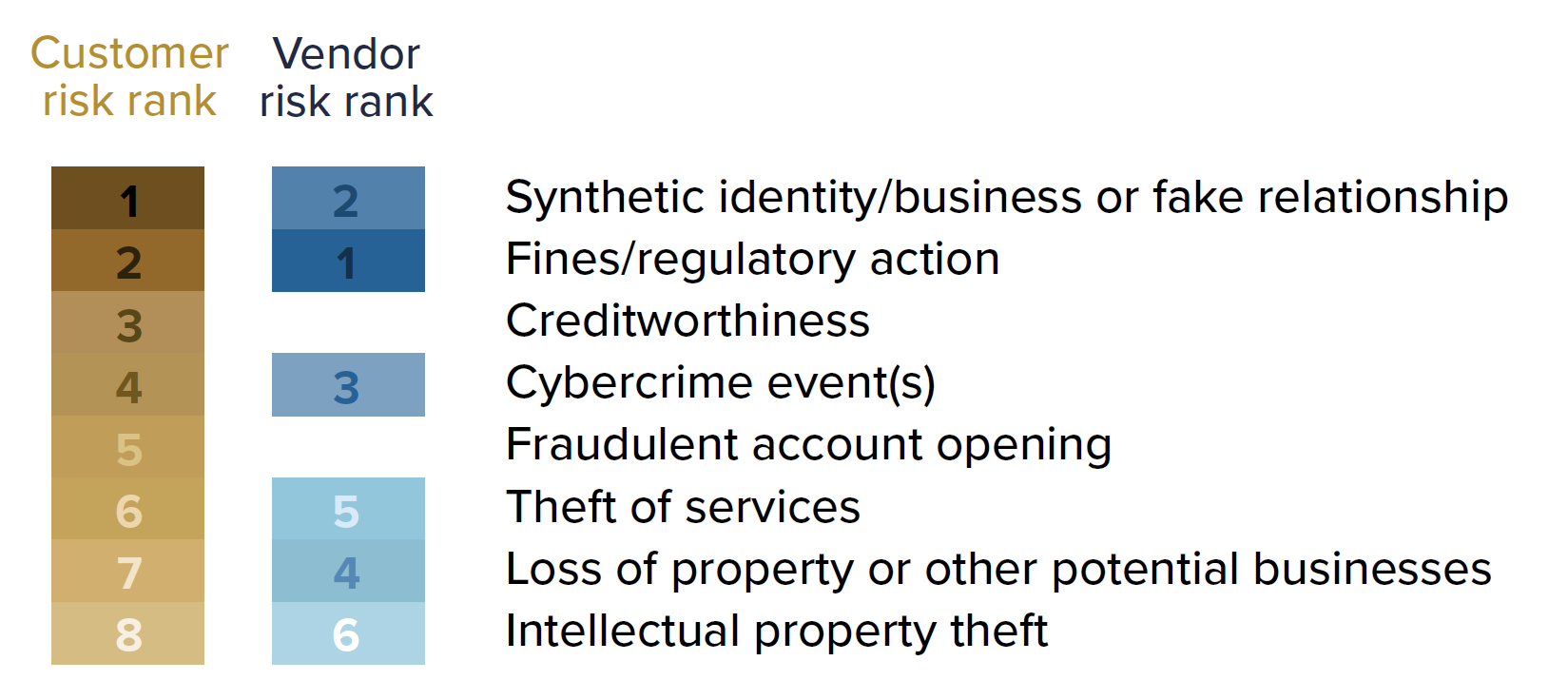Businesses have to be on guard against fraud involving the many other entities they engage during the course of their operations, a new benchmarking report says
Dealing with entities, rather than individuals, presents unique fraud considerations and compounds the risks significantly for many companies and firms.
Visibility into the vulnerabilities of collaborators is key to developing a proper risk appetite for relationships with a regulated organization. And given proper information and technology, businesses can screen effectively for fraud and avoid some large regulatory, financial, and reputational pitfalls.
To better explore these risks and controls that are related to business-to-business transactions and relationships, Thomson Reuters and the Association of Certified Fraud Examiners (ACFE) published a new report, Combatting Business-to-Business Fraud: Benchmarking Report. The report is largely based on a survey that was conducted to learn about individual organization’s know-your-vendor (KYV) and know-your-business (KYB) processes.
This new study finds that artificial intelligence (AI) has exacerbated fraud concerns in creating relationships. Because AI can be used to create both synthetic individuals and businesses, synthetic businesses created by fraudsters are a particular concern. Indeed, that concern was named — along with potential fines or regulatory actions — as the top two concerns of organizations when they on-board a new business customer or vendor.
You can download a copy of the Combatting Business-to-Business Fraud: Benchmarking Report here.
Conducting business with other organizations presents unique fraud considerations, the report notes. A majority of businesses say they’re facing challenges in bringing on new vendors or business customers due in part to those fraud concerns. From synthetic business identities to cybercrime, to theft of services, the risks of transacting with other businesses can be significant. Consequently, an effective program to vet and on-board new business customers and vendors is a critical component of a company’s comprehensive fraud risk management program.
Dori Buckethal, vice president of Thomson Reuters Risk & Fraud Solutions, indicates that companies are concerned about the reputational damage of doing business with a fraudulent entity — along with the regulatory fees and fines that result if they’re found to be working with sanctioned individuals or business entities.
The technology solution
Organizations that are subject to strict regulations find the concerns of fraud especially important to resolve. They need to make sure they are in line completely with the regulatory requirements. At first glance, the use of technology would seem like the problem, but it can also be a large part of the solution.
Effective technology is the only way to counter increasingly sophisticated fraud methods. When used properly, technology can prevent fraud even before it occurs or at least helps close the latency gap between when fraud occurs and when it is detected. Closing this gap limits the exposure and improves the organization’s chances to collect improper payments and apprehend bad actors. More than half of organizations surveyed said they plan to use more AI or machine learning as part of their KYB and KYV due diligence processes in the coming years.

As the report makes clear, a delicate balance needs to be struck to allow technology to be used to stay within corporation’s risk appetite. And an effective program to vet and on-board new business customers and vendors is a critical component of a comprehensive fraud risk management program.
The overall conclusion reached by the report is unsurprising: Prevention is the best cure. Organizations must take advantage of the opportunities and information provided by technology to combat bad actors’ own use of technology for illicit reasons. By investing in robust data and technology solutions now, businesses can limit bad actors’ ability to infiltrate their organization.







